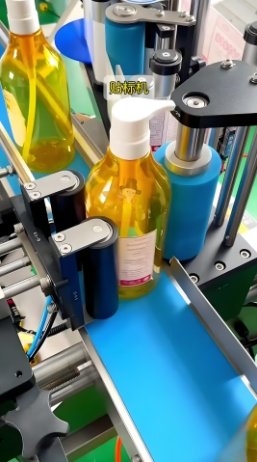
Adding a Labeling Machine to your production line is a smart investment. It improves product presentation, ensures compliance, and enhances production speed. When paired with an Automatic Filling Machine, the result is a streamlined system that fills and labels products efficiently and accurately.
Whether you’re in food, beverage, cosmetics, pharmaceuticals, or chemicals, knowing how to integrate a Labeling Machine correctly is essential. This guide walks you through the steps, benefits, and practical tips for doing it the right way.
Why Integrate a Labeling Machine?
A Labeling Machine adds essential information to your products—brand, ingredients, expiration date, barcode, and more. A poor labeling process can slow down operations, waste materials, or cause regulatory issues.
When your Labeling Machine is in sync with an Automatic Filling Machine, both machines can operate at high speeds while maintaining product quality. This increases output, reduces labor, and minimizes labeling errors.
Step-by-Step Process to Add a Labeling Machine
Step 1: Evaluate Your Production Line
Start by reviewing your current line. Do you use an Automatic Filling Machine? What type of packaging do you work with—bottles, pouches, jars, or boxes?
Measure your conveyor height and speed. A Labeling Machine must align with these specifications. Also, analyze your line speed to ensure the new machine can keep up without causing bottlenecks.
Step 2: Choose the Right Type of Labeling Machine
There are several types of Labeling Machines, each suited to specific packaging formats:
- Wrap-around Labeling Machine: For round bottles and jars
- Front and Back Labeling Machine: For flat or rectangular products
- Top and Bottom Labeling Machine: For boxes or clamshell packs
- Print-and-Apply Labeling Machine: For variable data like barcodes or dates
Choose the machine that best matches your product shape and label requirements. Make sure it integrates well with your existing Automatic Filling Machine setup.
Step 3: Determine Label Placement
Decide where the label will be applied. Should it go on the front, back, top, or bottom? Some products need more than one label.
Clear label placement is vital for compliance and consumer appeal. Many Labeling Machines offer adjustable heads so you can change placement as needed.
Integration with Automatic Filling Machine
Your Labeling Machine must operate in harmony with the Automatic Filling Machine. Here’s how to ensure seamless integration:
1. Match Conveyor Speed
Ensure both machines run at similar speeds. Too fast, and the labels may not stick correctly. Too slow, and you risk delays.
2. Sync Product Spacing
Use sensors or timing screws to ensure that each product arrives at the Labeling Machine evenly spaced. This improves accuracy and prevents misalignment.
3. PLC Communication
If both machines use programmable logic controllers (PLCs), integration becomes easier. The two systems can “talk” to each other and adjust automatically based on changes in flow or error signals.
4. Use Buffer Zones
Install short conveyor buffers between the Automatic Filling Machine and the Labeling Machine. This gives space to sort or inspect items before labeling.
Power and Air Requirements
Most Labeling Machines require both electric power and compressed air. Check voltage compatibility with your factory setup. Make sure the air supply meets the pressure needs of the applicator arms or tamping systems.
Also, ensure your Automatic Filling Machine does not interfere with the air or power lines of your Labeling Machine. Clean layout and organized cabling help avoid downtime.
Installation Tips
- Use adjustable conveyor brackets for flexible placement
- Test the first few batches before full production
- Train staff on start/stop functions and emergency procedures
- Apply labels at room temperature to improve adhesive bonding
- Place your Labeling Machine in a dust-free zone for better label quality
By following these tips, your Labeling Machine will work efficiently alongside your Automatic Filling Machine, maximizing uptime and productivity.
Labeling Accuracy and Quality
Accuracy is crucial in labeling. Even a small shift can affect how customers perceive your brand. Here’s how to ensure high quality:
- Use photoelectric or ultrasonic sensors for label detection
- Employ servo motors for precise label feed and placement
- Keep label rolls aligned and tension-controlled
- Clean rollers and label paths regularly
- Ensure proper container handling by the Automatic Filling Machine
Accurate labels improve professionalism and reduce rejected products, saving time and money.
Maintenance and Troubleshooting
A well-maintained Labeling Machine lasts longer and performs better. Follow these basic rules:
- Inspect for worn belts and replace as needed
- Lubricate moving parts monthly
- Clean dust, glue, or label residue regularly
- Recalibrate sensors after software updates or long downtime
- Schedule routine maintenance like you do for your Automatic Filling Machine
Keep a maintenance log to track machine health and anticipate issues before they affect your line.
Training Your Team
Operators should understand both the Labeling Machine and the Automatic Filling Machine. Cross-training ensures faster problem-solving during operation.
Train your team on:
- Label loading and threading
- Sensor calibration
- Error code interpretation
- Safety protocols
- Quick-change procedures for labels and containers
When everyone knows how to handle the machines, your production stays smooth and efficient.
Conclusion
Adding a Labeling Machine to your production line is a big step toward automation, branding, and efficiency. When integrated with an Automatic Filling Machine, the results are powerful—faster packaging, better quality, and higher output.
Before making your investment, analyze your current setup, choose the right type of Labeling Machine, and ensure compatibility with speed, sensors, and layout. Train your staff, follow regular maintenance, and enjoy the benefits of a high-performing labeling and filling solution.
In a competitive market, automation is key. With the right Labeling Machine and Automatic Filling Machine, your business is ready to grow—efficiently, consistently, and professionally.

